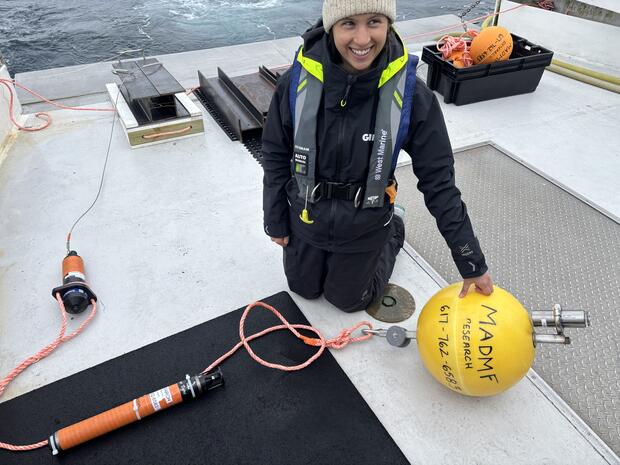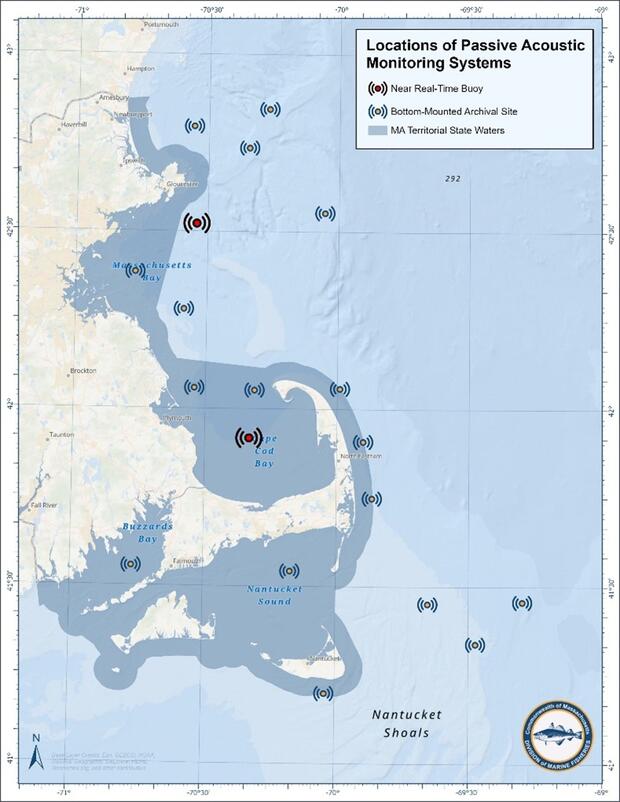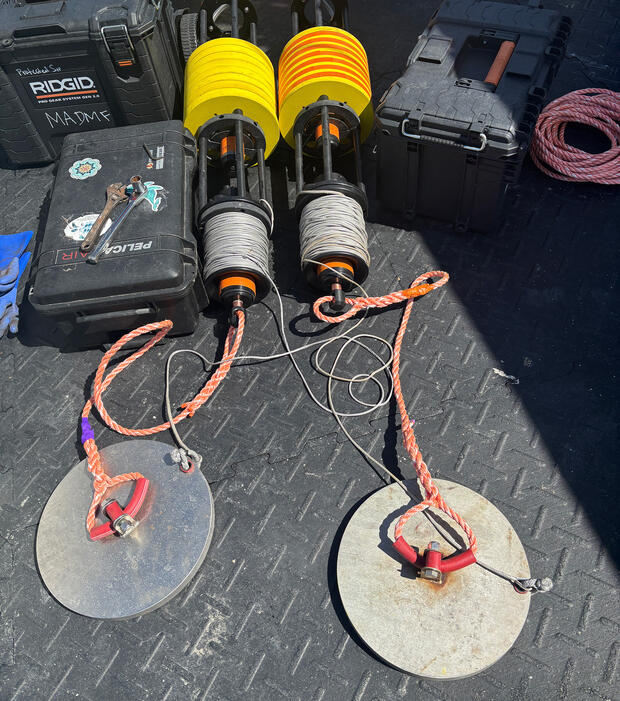- Division of Marine Fisheries
DMF’s Protected Species Program has recently launched a passive acoustic monitoring (PAM) network in Massachusetts state waters and adjacent federal waters. The network consists of underwater hydrophones continuously recording sound. These acoustic data are analyzed for specific large whale vocalizations which provide information on the presence of different species, including North Atlantic right whales, humpback, fin, and sei whales. The primary goal of the monitoring effort is to improve our understanding of the spatial and temporal presence of right whales in Massachusetts coastal waters and inform current and future conservation measures to protect them.
Our acoustic monitoring network has two manners of detecting whales: in near real-time and an archival approach. In partnership with the Woods Hole Oceanographic Institution (WHOI), two near real-time acoustic monitoring systems were deployed in February 2025 in Cape Cod Bay and off Cape Ann. Developed by WHOI, the two surface-moored systems record, detect, classify, and report vocalizations of large whales, with data transmitted via satellite to shore every two hours. Acoustic analysts review data to confirm detections.
This near real-time data helps DMF dynamically manage seasonal fishing closures and speed restrictions meant to protect right whales and will contribute to an improved overall understanding of right whale presence in Massachusetts. In addition, the acoustic detections are used by NOAA Fisheries to trigger voluntary, dynamic Slow Zones. Data from the near real-time buoys, which are part of a larger monitoring network along the East Coast, can be found at Robots4Whales.
To further explore how right whales use coastal Massachusetts waters, DMF deployed 17 archival passive acoustic monitoring stations in spring 2025. These bottom-mounted units record sound data that are retrieved from the systems every five months. Once back at the lab, the data are analyzed for specific whale vocalizations. The first retrieval and redeployment of the archival systems will take place in late August and early September 2025. These recorders are also part of a regional acoustic monitoring network for large whales in the Northeast in collaboration with NOAA’s Northeast Fisheries Science Center and other New England states. This collective effort aims to build a more thorough understanding of large whale behavior and ecology, helping scientists determine spatial and temporal trends in New England waters.
To help communicate locations of DMF’s currently deployed monitoring systems, we launched a public-facing website regarding these efforts including an interactive map to visualize the monitoring network and provide positions for download. The map also provides information on current spatial management relevant to coastal Massachusetts, as well as positions of large whales and sea turtles sighted during deployment efforts. Additional resources can be found at this website (www.mass. gov/pam-app) related to DMF’s acoustic study, visual and acoustic detections of large whales along the entire eastern seaboard of North America, links to DMF advisories, and Protected Species Program news.
By Erin Burke, Protected Species Program Manager



